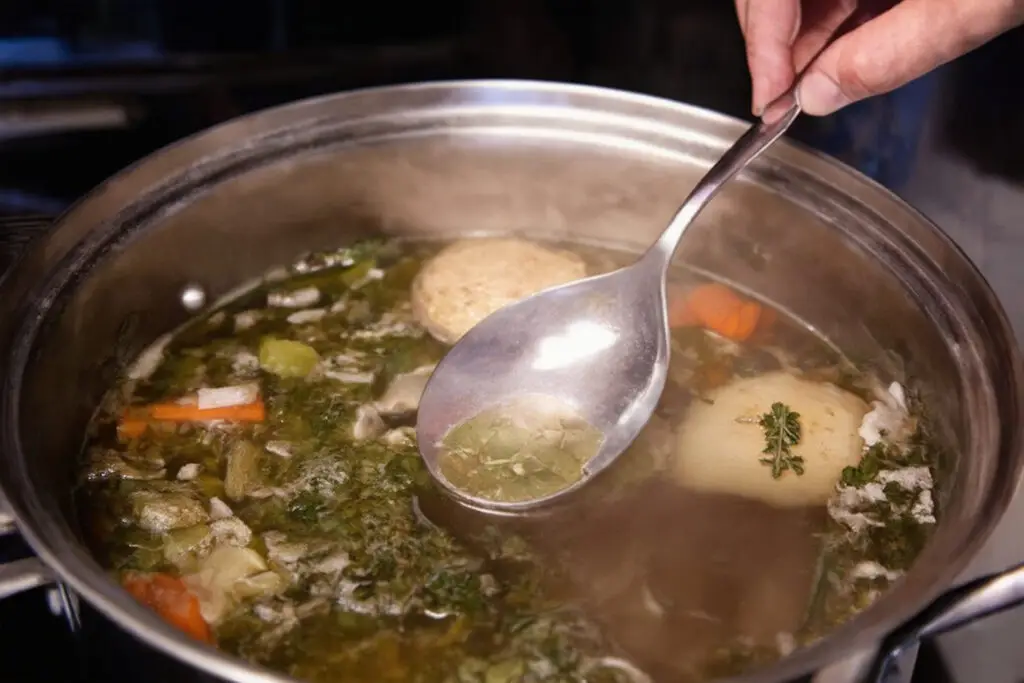Ingredients:
- Water – 3 liters
- Beef bones – 500 gm
- Carrots – 2 pcs
- Onions – 1 pc
- Celery – 1 stalk
- Bouquet Garni (a bundle of herbs usually consisting of thyme, bay leaves, and parsley, tied together with string) – 1 bunch
- Garlic – 3 cloves
- Black Pepper – 1 teaspoon
- Tomato Paste – 2 tablespoons (optional for richer color and flavor)

Method of Preparation:
- Transfer the roasted bones to a large pot. Add the chopped carrots, onions, celery, garlic, bouquet garni, and black peppercorns to the pot.
- Preheat your oven to 200°C (400°F). Spread the beef bones on a baking sheet and roast them for about 30 minutes or until they are nicely browned. This step enhances the depth of flavor in your stock.
- Pour 3 liters of water over the ingredients and bring it to a boil.
- Reduce the heat to low and let the stock simmer gently for 4–6 hours. Skim off any impurities that rise to the surface periodically to keep the stock clear.
- After simmering, strain the stock through a fine sieve to remove the bones and vegetables. Discard them.
- If you want a richer stock, add the tomato paste during the last hour of simmering.
- Let the stock cool before storing it in the refrigerator or freezing it in portions for later use.
Why Make Beef Stock?
Beef stock is a robust and flavorful base for many hearty dishes. It’s packed with essential nutrients, including collagen from the bones, which is beneficial for your joints, skin, and digestive system. Making your own beef stock ensures that you have a clean, additive-free, and richly flavored broth that can enhance a variety of meals.
Uses of Beef Stock:
- Soup base: Ideal for making soups like French onion, beef barley, or vegetable beef soup.
- Stews: Use it to make deeply flavorful stews, such as beef bourguignon or Irish stew.
- Gravy and sauces: Beef stock is excellent for gravies, jus, or any dish that requires a savory sauce.
- Braising: Great for braising tougher cuts of meat or vegetables, making them tender and flavorful.
Having homemade beef stock at hand can greatly elevate the depth of your dishes. Whether it’s used as a soup base, for braising, or to make rich sauces, the robust flavors created through slow simmering are far superior to store-bought alternatives. Plus, it’s a fantastic way to use up leftover beef bones!

